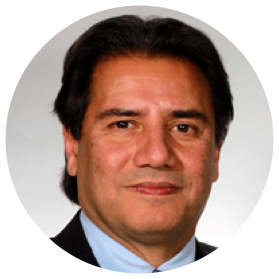
Hamid Sharif
IEEE Fellow and Professor at The University of Nebraska, USA
Abstract: Wireless Communications for High-Speed Trains in US
High-speed trains, though prevalent in Europe and Asia, are not yet a reality in the US. Interests and industry engagements are growing, especially around commercial hubs close to commuter homes for alleviating commute times and cost. With support from the US Federal Railroad Administration (FRA) in the Department of Transportation (DoT), Dr. Sharif’s team has explored the design requirements, challenges, and technology capabilities for high-speed wireless communications for high-speed trains using the next-generation radio access technologies. A safe, secure, efficient and seamless train operation moving underground or over at a regular or high speed (around 300 km/h) requires reliable wireless communications. The wireless communications to support in-train passenger services, train signaling and controlling services necessitate challenging considerations regarding wireless channel conditions and communications management, especially considering movement through different terrain environments (hills, flat-rural, urban-dense, etc.) and railroad infrastructure (bridges, viaduct, tunnel). These scenarios cause difficult wireless channel conditions to manage for a train-to-ground Radio Access Networks. Dr. Sharif will discuss the technical challenges for this wireless architecture including modeling and simulations as well as insights into evaluated properties of this system.
Dr. Hamid Sharif is an IEEE Fellow and the Charles J. Vranek Professor with the Department of Electrical and Computer Engineering at the University of Nebraska-Lincoln (UNL). He is also the Director of Advanced Telecommunication Engineering Laboratory (TEL) at UNL. He has over 35 years of academic and industrial experience and his research interests include Mobile Communications Security, Intelligent Transportation, Wireless in Surface Transportation, Security in Multimedia Transmissions and IoT Cooperative Communications. He has published close to 400 research articles in national and international journals and conferences and has been serving on many IEEE and other international journal’s editorial boards. His research has been supported by NSF, DoT, DoD, DoE and a number of industries. He has been the recipient of a number of research awards and best papers. He is currently a Distinguished Lecturer for the IEEE Vehicular Technology Society.
i-ETC will offer a number of student awards for papers/posters that are accepted and
presented at the i-ETC 2020 conference.
The first author must be a student.
Student Paper Awards
First Engineering Paper Award
(Certificate and $300)
Second Engineering Paper Award
(Certificate and $200)
Third Engineering Paper Award
(Certificate and $100)
Student Poster Awards
First Poster Award
(Certificate and $300)
Second Poster Award
(Certificate and $200)
Third Poster Award
(Certificate and $100)
Student Paper Awards
First Computing Paper Award
(Certificate and $300)
Second Computing Paper Award
(Certificate and $200)
Third Computing Paper Award
(Certificate and $100)
Student Poster/Paper Awards
ACI Paper/Poster Award
(Certificate and $200)
The award is sponsored by the American Concrete Institute (ACI: Intermountain Chapter)
Student Paper Awards
First Technology Paper Award
(Certificate and $300)
Second Technology Paper Award
(Certificate and $200)
Third Technology Paper Award
(Certificate and $100)